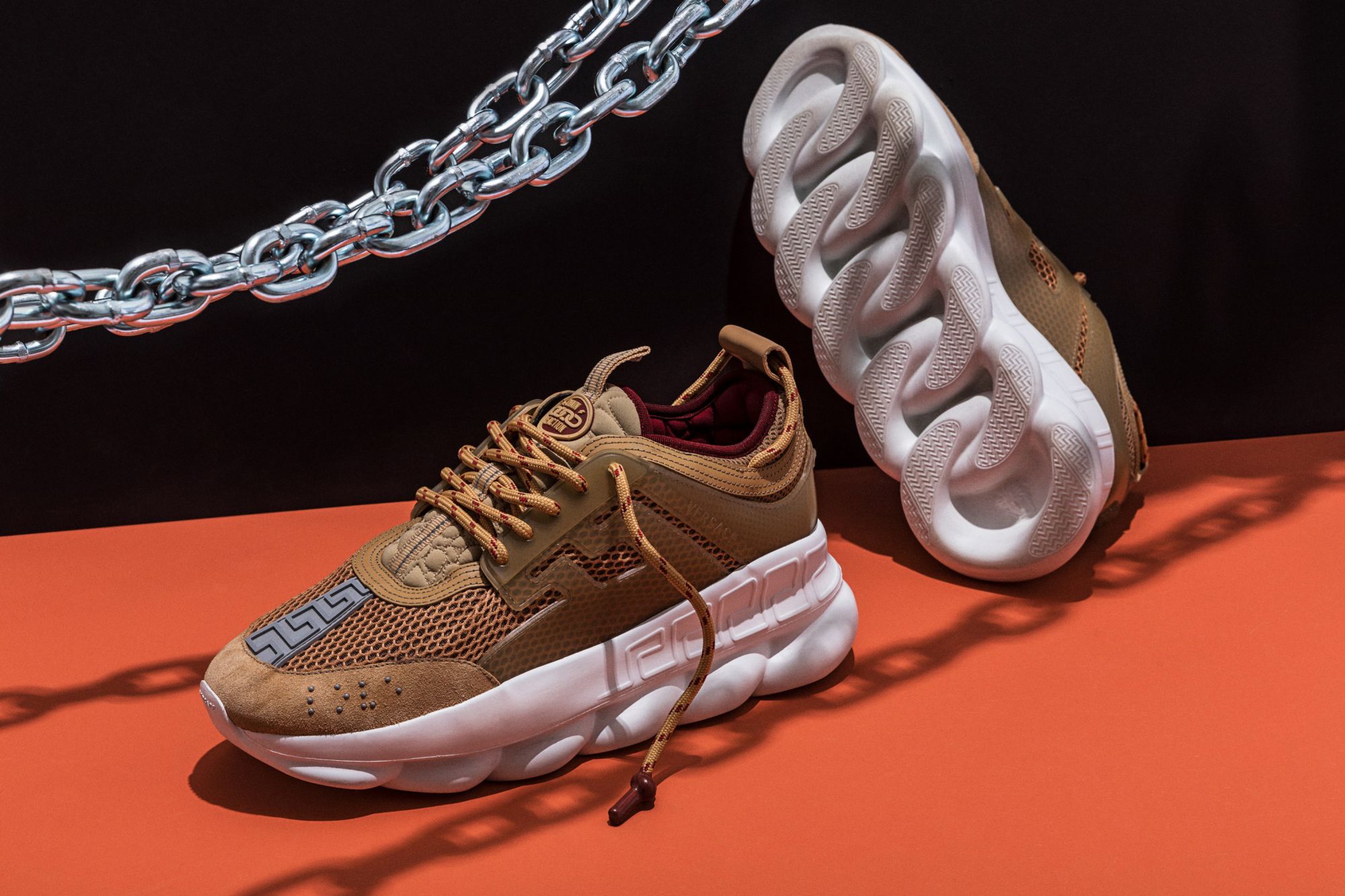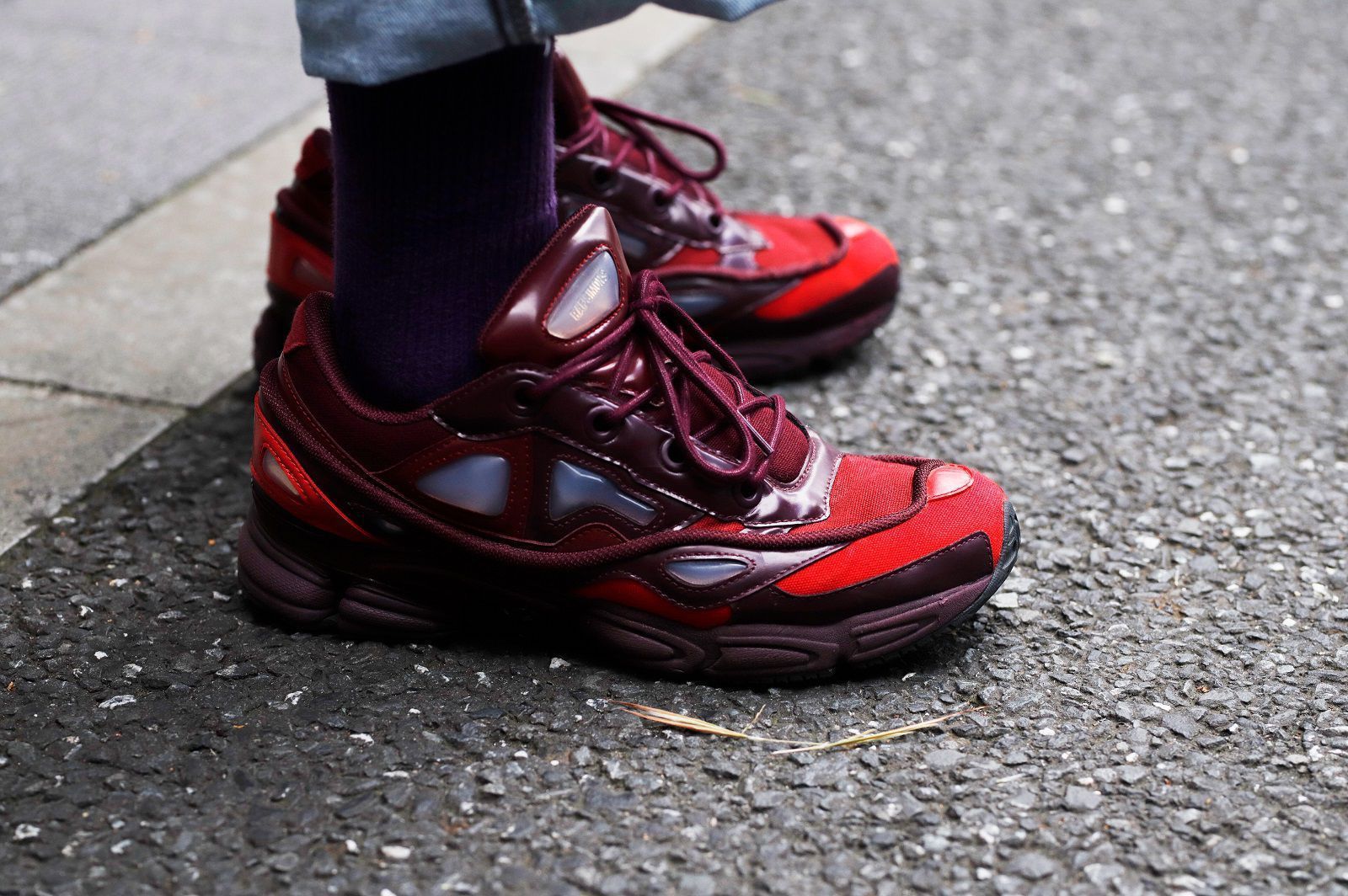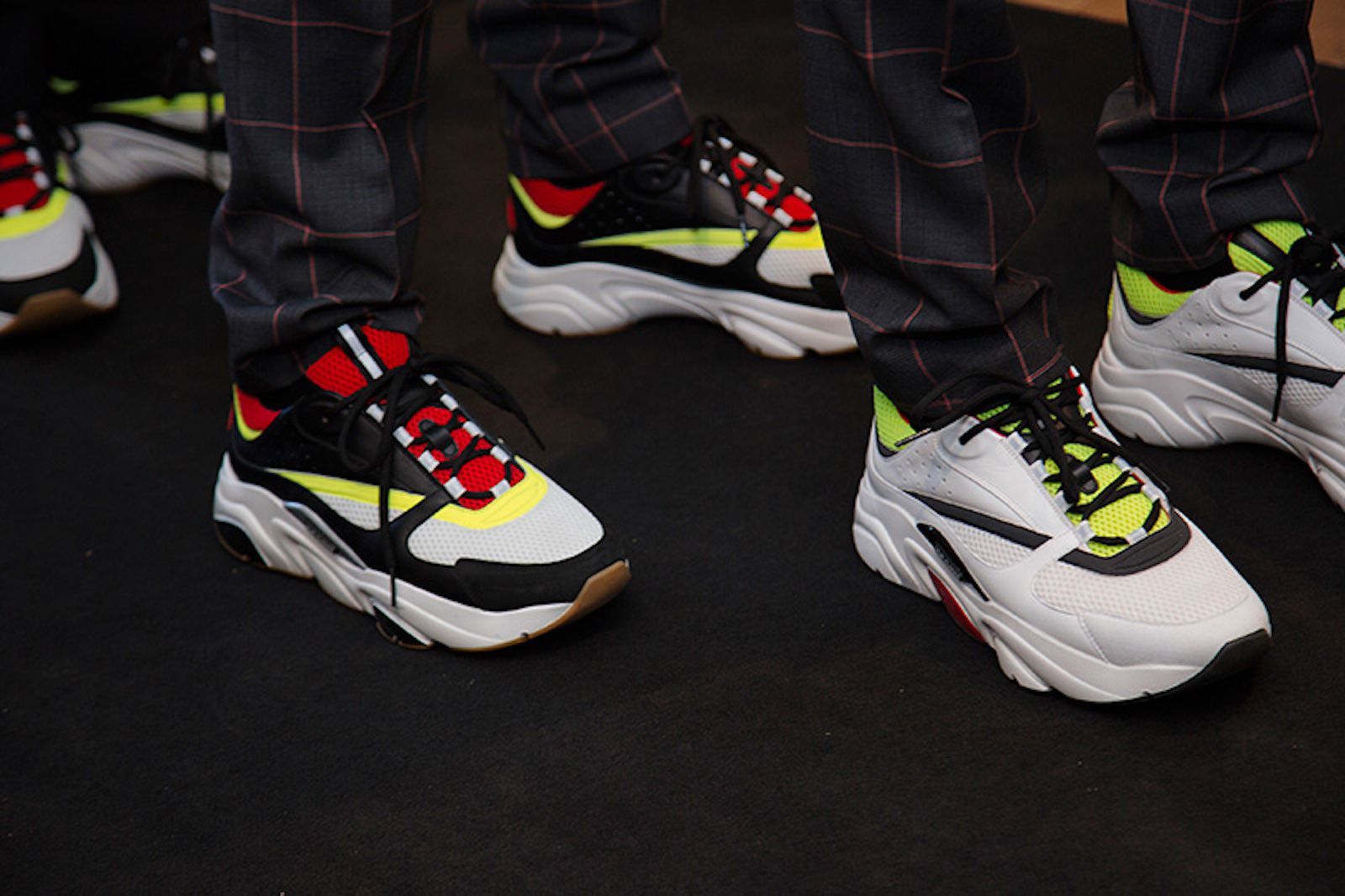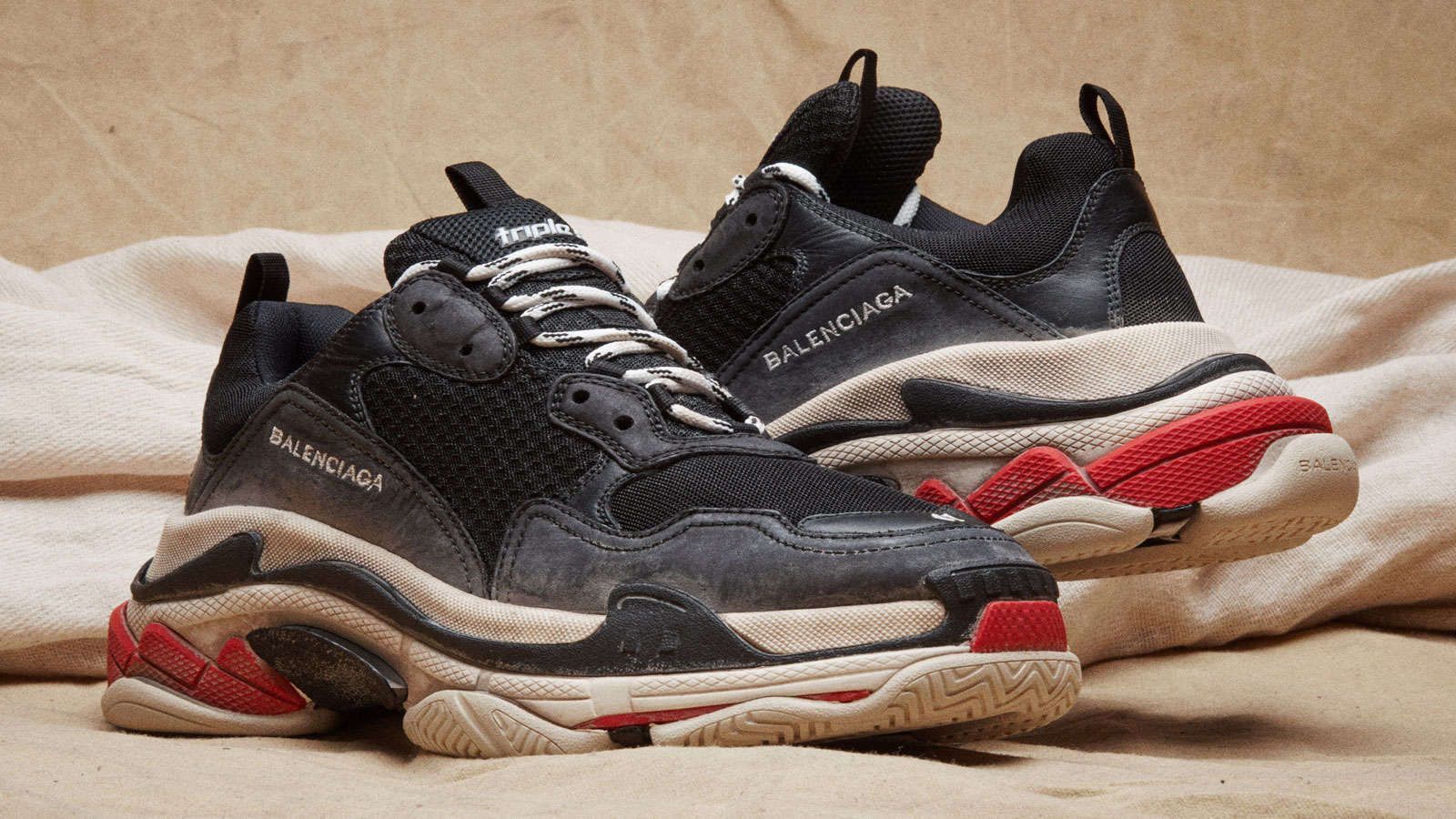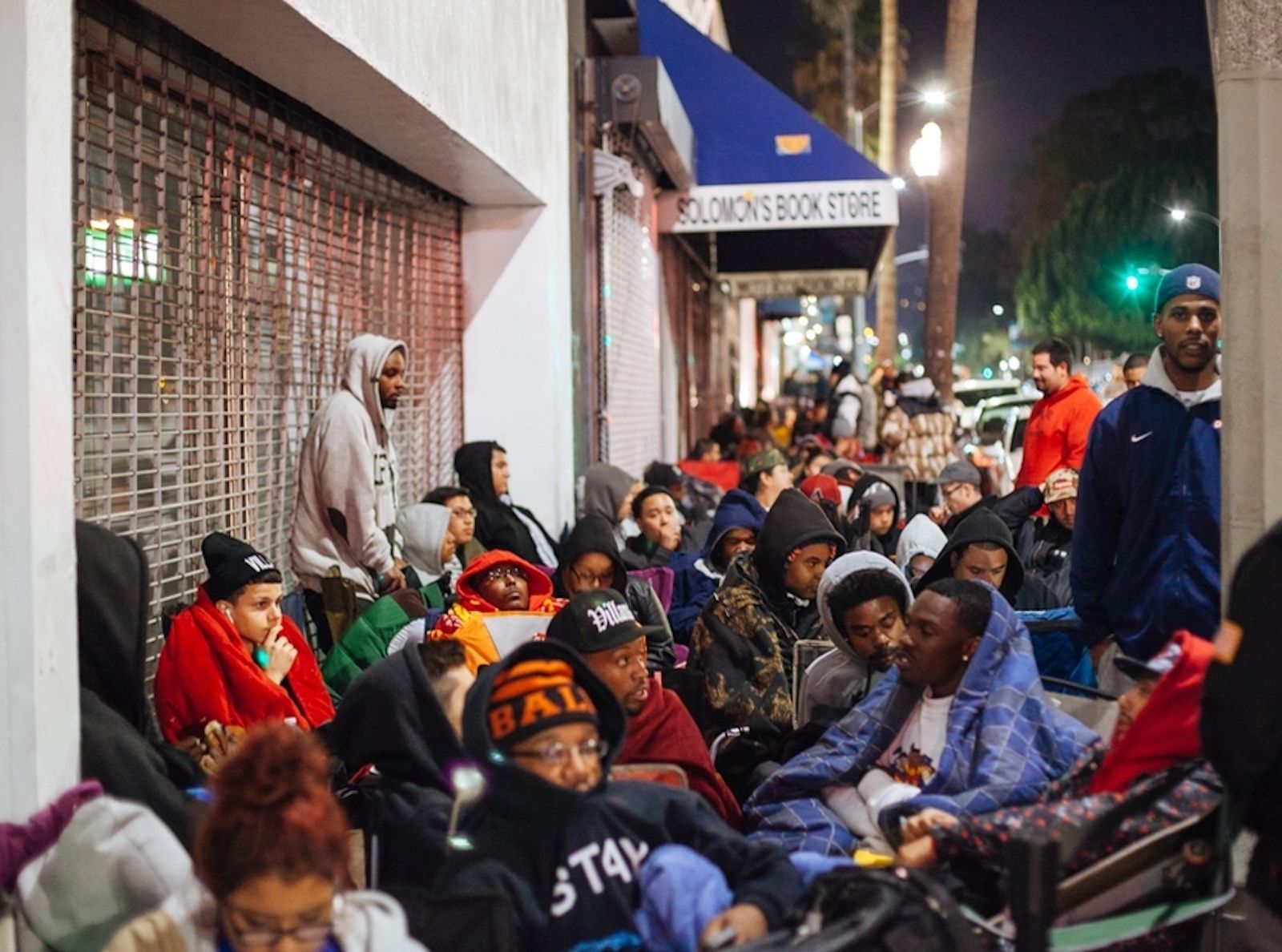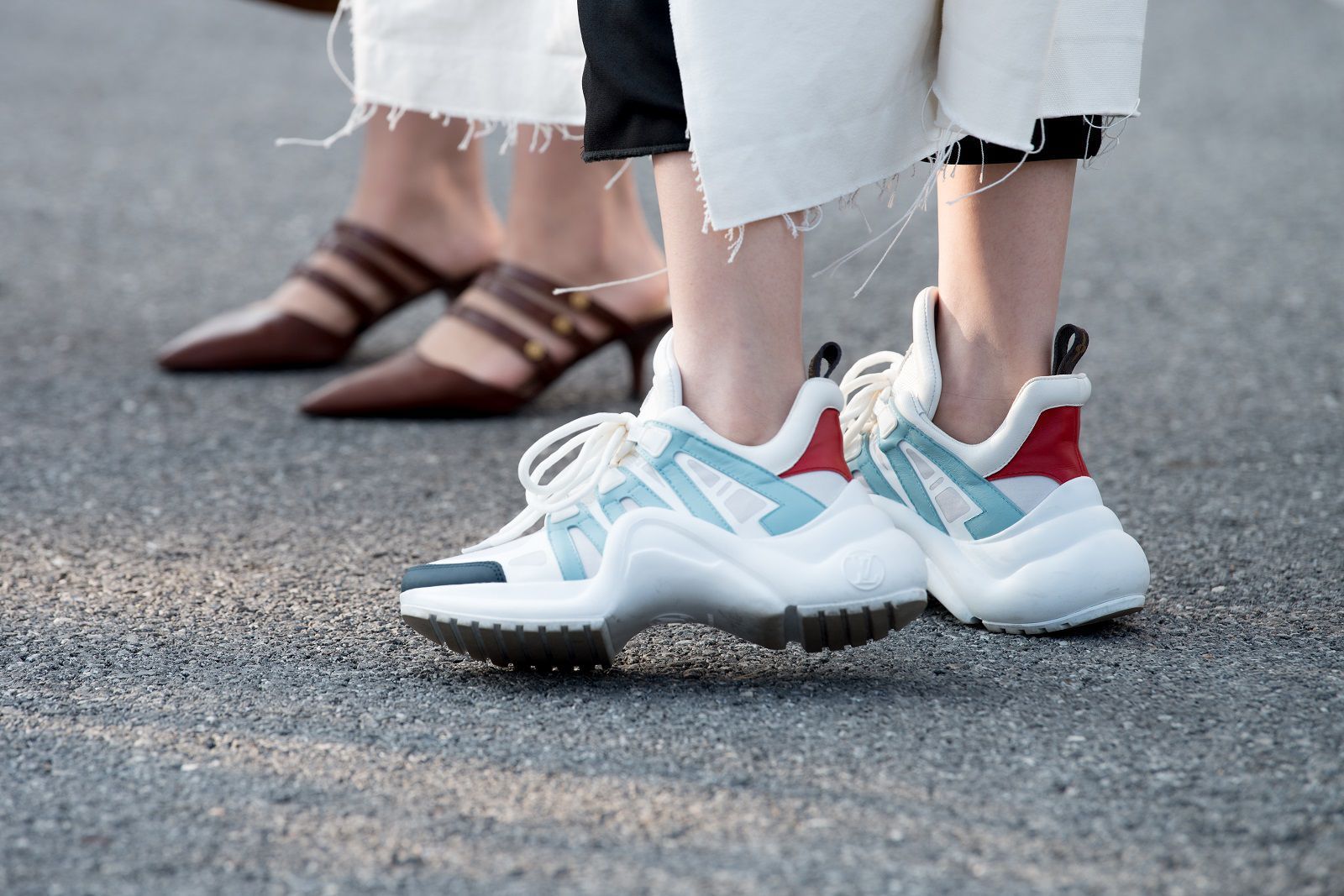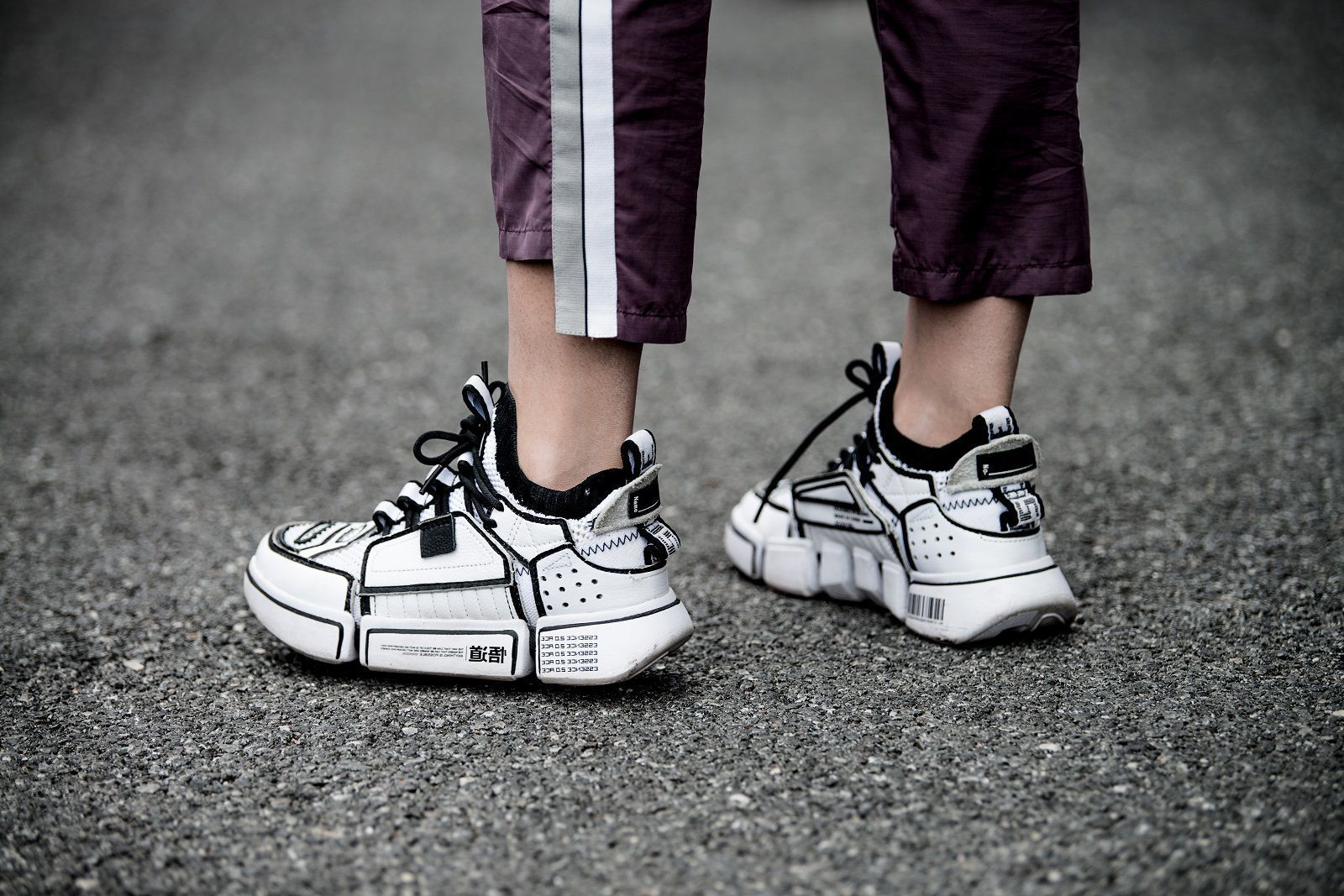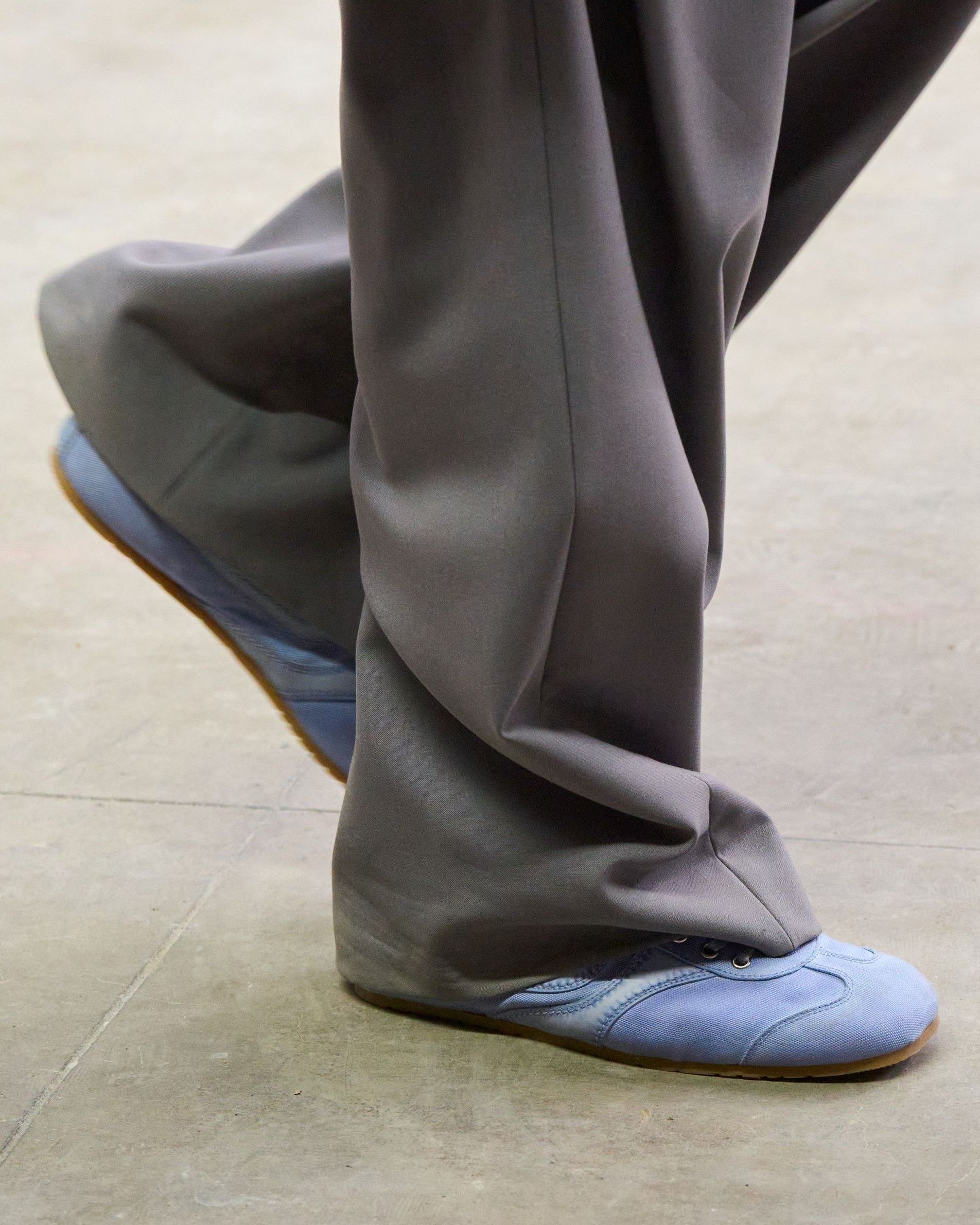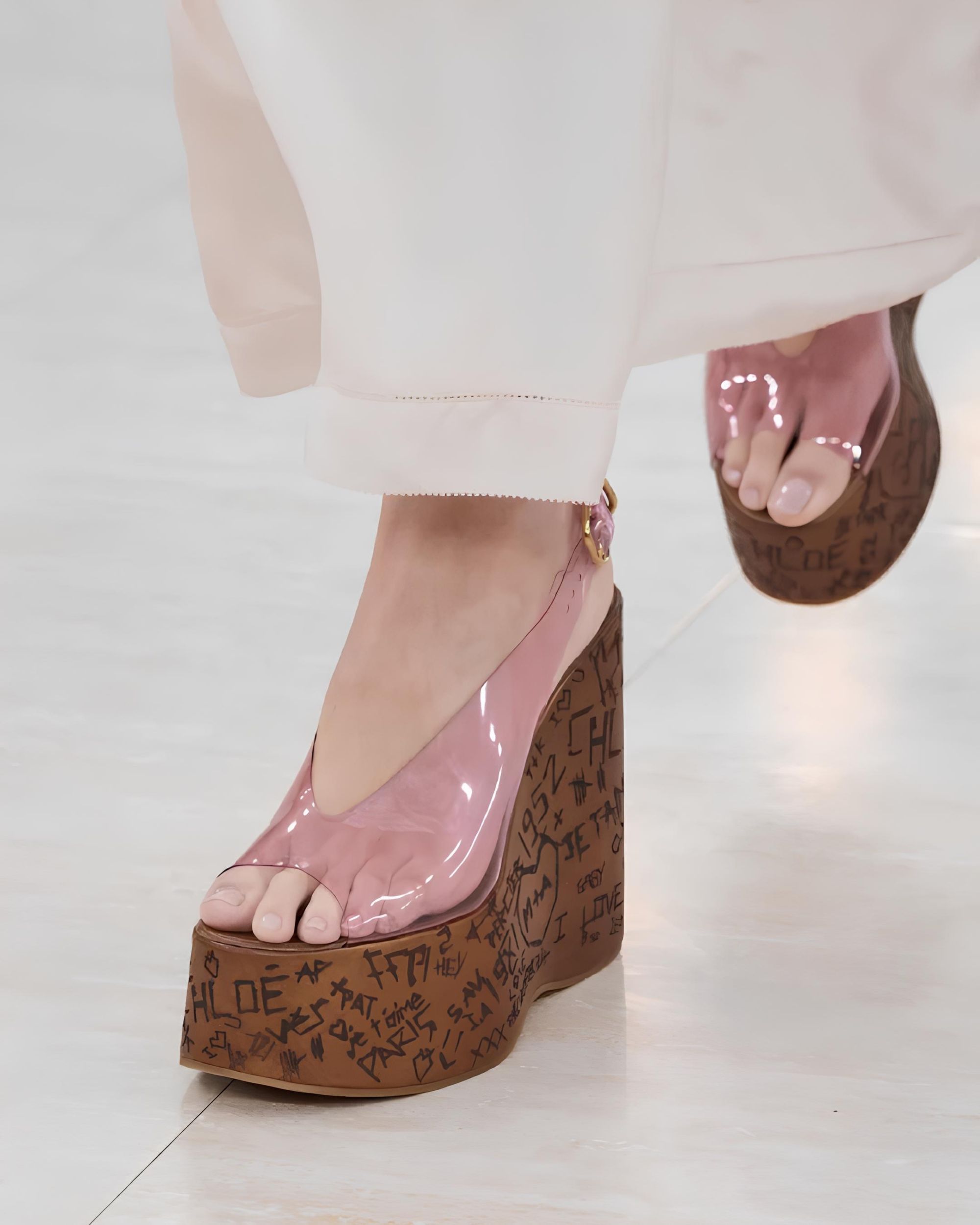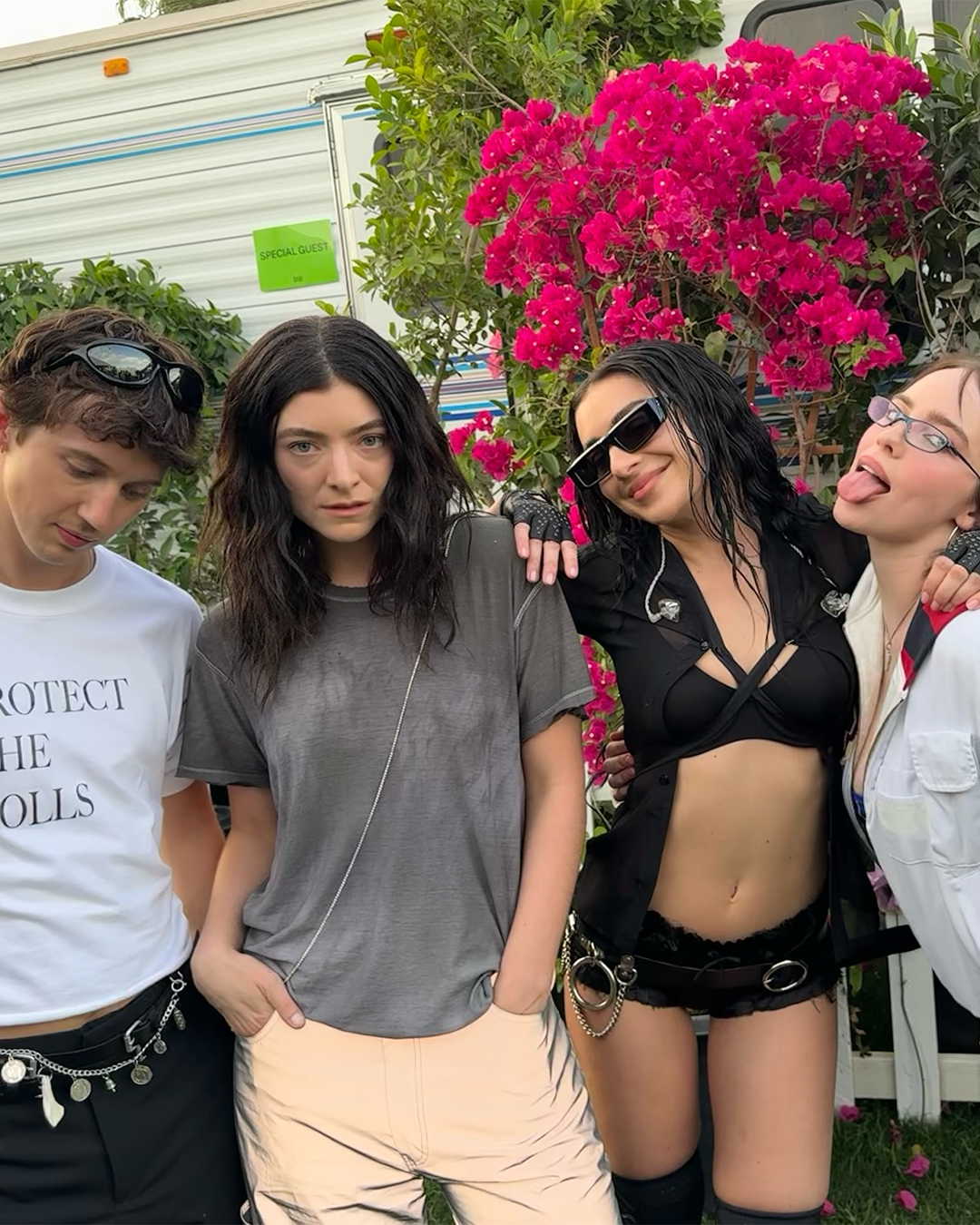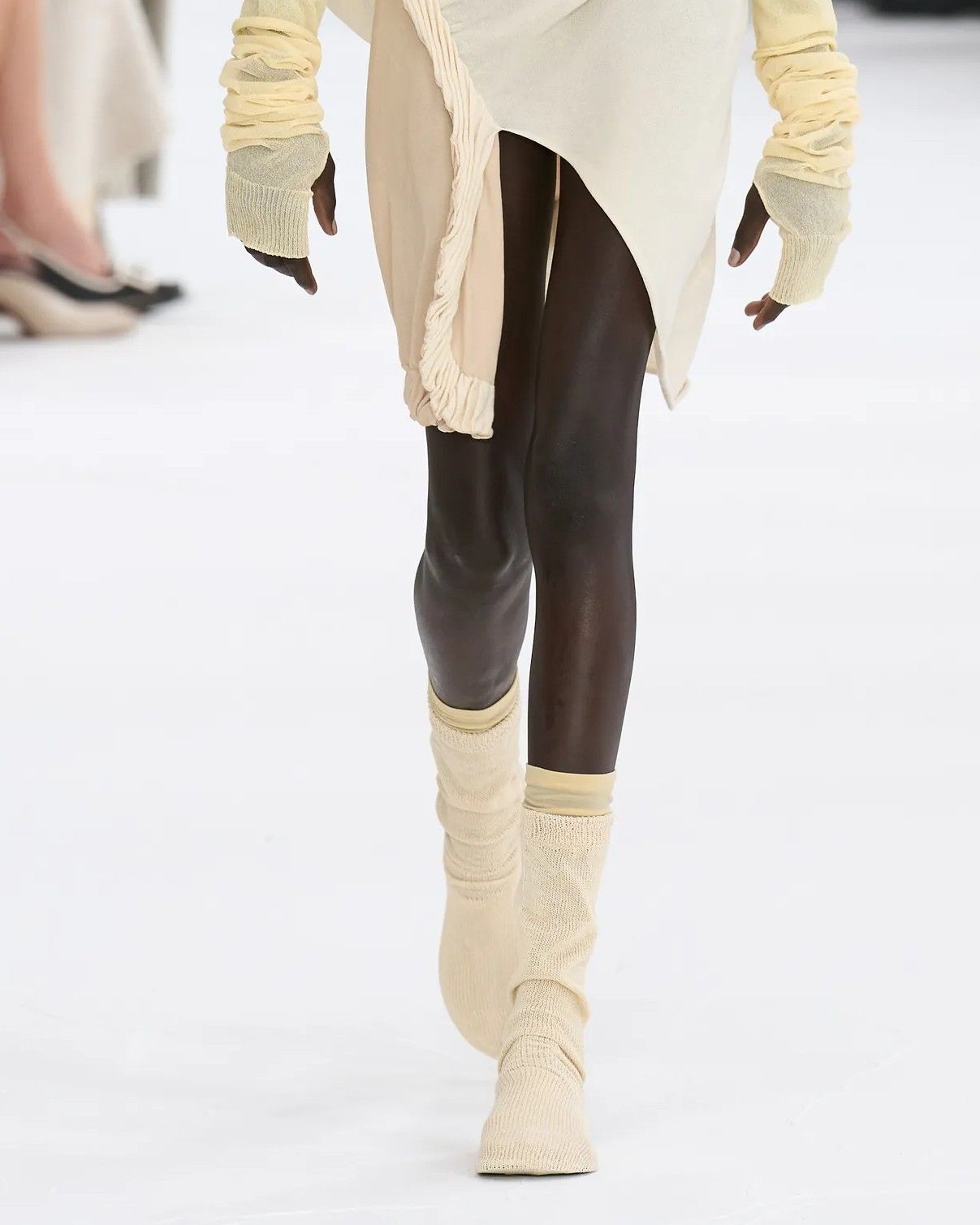
Is high fashion to blame for the possible death of sneaker culture? A reflection about a bubble we might see popping
In the latest discourse of the fashion industry, speculations have been made questioning whether the bubble of sneaker culture is coming to an end. Following Balenciaga’s well-accepted release of their Triple S sneakers last year, everyone else seems to have been jumping on the sneaker bandwagon in aim of creating the next ‘it-sneaker’. The past few runway seasons have experienced a posse of ravenous commercial designers complementing their luxury collections with trendy and at times quite strange sneaker designs in hope of breaking into the newly re-discovered sneaker market. Louis Vuitton presented their collection with a version of the chunky sneaker, so did Gucci and Prada with a neon design, some of which have actually turned out to be best-sellers. However there were brands like Versace and Escada who seemed to have presented their collection with sneakers simply because they had to, without any thought of design or practicality involved. This is where the problem began, prior to this sneaker-craze phase, luxury fashion house’s such as these would never dare to make these shoes one of their major marketing points unless it was the release of a capsule collection.
“When I saw sneakers were going to be a thing, I fought it for a bit,” Salvatore Ferragamo’s designer Paul Andrew said at a conference earlier this year. “We’re definitely now investing heavily in that category”.
This competition might be good news for the sportswear brands such as adidas or nike who have already been in the game, as it allows sneakers to be sold at a higher price with a greater product margin than before. It has also helped in broadening the awareness around the sneaker culture which has helped grow the sub-industry into a billion dollar industry. However, the partnership also risks creating an oversaturation in the market without the growth of actual consumers. With the fashion industry jumping on board the sneaker train, it might create the idea that the general long-term demand is growing and is much more than it actually is, when it might just be the fashion industry having its brief moment with the trend. Fashion’s reputation to embrace trends as quickly as it tosses them is just too similar to the habits of a teenage fuckboy in his relation to female counterparts. In 2012, fashion’s love affair with high heeled pumps, would cost you a pair of Louboutin’s would cost you around $4000, today, those same shoes are going for less than half the price on ebay , not to mention it’s brief fling with beanies and nerd glasses.
Unfortunately, today it seems as if the industry’s new demand for the sneaker has somehow fused with the demand of actual sneakerheads, however these are two things that need to be seen separately. In fashion things go out of style as quickly as they get in, while the sneaker community’s cycle runs on more of a collector basis. If it is that we are afraid that fashion’s newly found fetish for sneakers is coming to an end then that is something we should have all predicted. However just as how the industry’s embarkment on this market has influenced it positively, so might it’s disembarkment leave a negative impact. In other words, the fashion industry’s sneaker bubble resides inside the larger bubble of the sneaker world, and when that inside bubble decides to pop, it might leave the larger bubble a few pounds lighter than it was. This might result in the lowering of the product demand and possibly even the devaluation of the product itself.
This isn’t at all to say that sneakers will disappear, however in this case it could start with a bunch of different sneakers being sold at their original values, without enough interested consumers to bring it complete profit for every brand. Then it could slowly result to the discounting of prices, which is what risks the decline of the overall market value and the aggregate demand. This is only a fraction of the possibility of what it could look like following this sneaker peak. If things get really bad, the sneaker industry could resemble Vetements’ great death after their peak in 2015 where prices were significantly slashed as a result of low sales, but one can only hope it will never get to that drastic point.









































